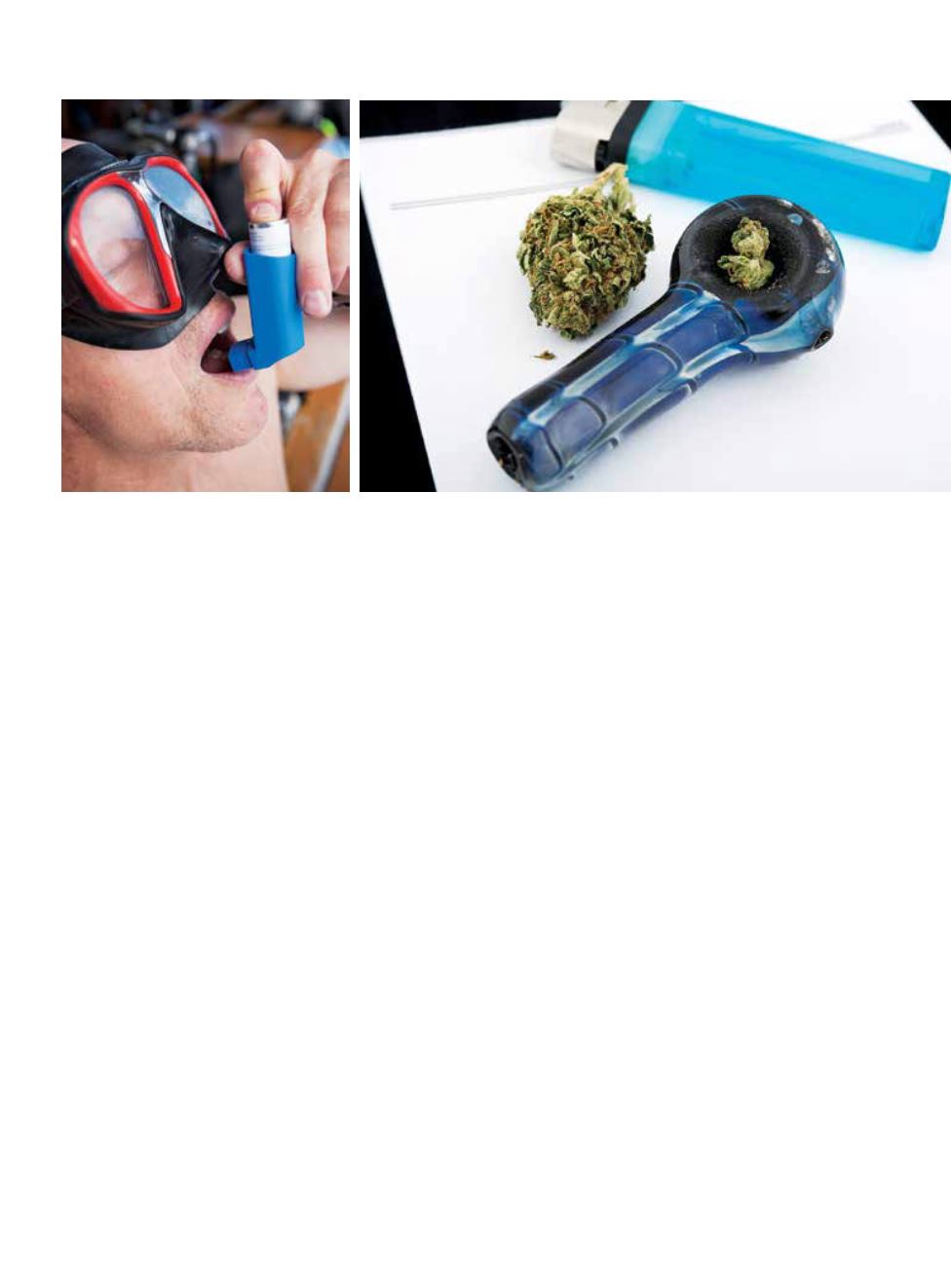
RESEARCH, EDUCATION & MEDICINE
//
E X P E R T O P I N I O N S
50
|
SPRING 2014
B y P e t a r D e n o b l e , M . D . , D . S c .
A
sthma is considered a concern when
it comes to fitness to dive because of
associated airway reactiveness and
obstruction of small airways, which may
cause pulmonary barotrauma or drown-
ing during diving. Preparticipation screening specifi-
cally addresses asthma; when divers admit to signs or
symptoms, a medical evaluation by a physician is sug-
gested. Guidelines for medical evaluations are provided
by diving medical societies.
On the other hand, tobacco smoking, which is a
major cause of chronic obstructive pulmonary disease,
is less stringently addressed in the Recreational Scuba
Training Council (RSTC) screening questionnaire, and
no specific guidelines are provided. Smoking marijuana,
which is in some aspects similar to tobacco smoking, is
not addressed by screening tools at all. Recently we have
received questions about how respiratory function in
people with asthma compares to respiratory function in
people who smoke tobacco or marijuana and how these
affect the assessment of fitness to dive.
Obstructive Lung Disease
Both asthma and smoking are associated with
narrowing and inflammation of the small respiratory
airways, which result in reduced airflow through
pulmonary airways. However, the reduced airflow
with asthma occurs intermittently and is reversible
whereas with chronic smoking airflow progressively
and irreversibly deteriorates and usually doesn’t reveal
itself until older age. With aging, about 20 percent
of smokers and 23 percent of patients with asthma
manifest chronic obstructive pulmonary disease (COPD)
characterized by fixed airflow obstruction.
Asthma most often presents at a young age as
recurrent episodes of increased airway obstruction that
may vary in frequency and intensity. In adulthood asthma
attacks become less frequent. Adult-onset asthma occurs
in individuals 20 years or older. This type of asthma is
frequently caused by allergies. An asthma attack may be
provoked by exercise, cold and dry air or inhalation of
hypertonic aerosols (normal saline used diagnostically to
provoke a reaction). The respiratory airways are affected
PHOTO CREDIT
Tobacco, Marijuana
and Asthma
Differential assessment of dive fitness in smokers and
people with asthma
ISTOCKPHOTO.COM
STEPHEN FRINK


